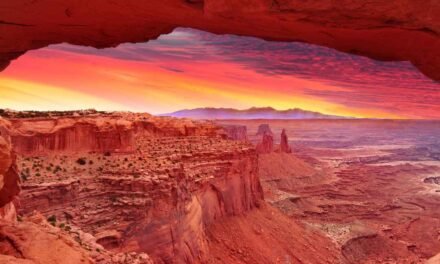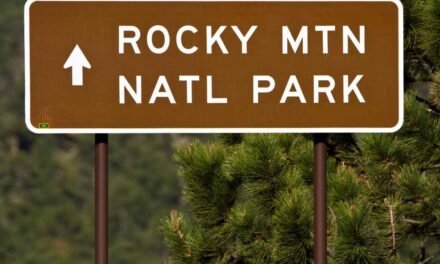Welcome to Kenai Fjords National Park, a breathtaking landscape of glaciers, fjords, and rugged coastlines. This pristine wilderness offers an incredible array of outdoor activities and opportunities to witness diverse wildlife in their natural habitat. This comprehensive visitor’s guide will provide you with all the information you need to plan an unforgettable trip to this extraordinary national park.
Overview
Established in 1980, Kenai Fjords National Park spans over 669,000 acres on the Kenai Peninsula in southern Alaska. The park is renowned for its stunning fjords, which were carved by glaciers during the last ice age. Home to the Harding Icefield, one of the largest ice fields in the United States, the park features an astounding 40 glaciers that flow from it. With its breathtaking beauty and unique ecosystems, Kenai Fjords National Park offers visitors an unparalleled experience of Alaska’s wilderness.
Kenai Fjords National Park Location
Kenai Fjords National Park is located on the southeastern side of the Kenai Peninsula in Alaska, approximately 130 miles south of Anchorage. The nearest town to the park is Seward, which serves as a gateway for visitors and offers various services and amenities. To reach the park from Anchorage, you can take the Seward Highway (AK-1) south, which is a scenic drive that takes approximately 2.5 hours.
Kenai Fjords National Park Things to Do
Wildlife Viewing
Kenai Fjords National Park is a haven for wildlife enthusiasts, with opportunities to spot a wide array of species in their natural habitat. You can see marine mammals such as orcas, humpback whales, sea otters, and harbor seals, as well as land animals like black bears, moose, and mountain goats. Birdwatchers will also enjoy the park, which is home to various seabirds, including puffins, kittiwakes, and cormorants.
Boat Tours
One of the best ways to explore the park’s fjords and witness its spectacular glaciers is by taking a boat tour. These tours depart from Seward and provide an up-close experience of the park’s stunning marine environment. Various tour options are available, ranging from half-day to full-day excursions, and many include opportunities for wildlife viewing and exploring remote coves and inlets.
Hiking
Kenai Fjords National Park offers an array of hiking trails, catering to various levels of experience and fitness. One of the most popular trails is the Harding Icefield Trail, an 8.2-mile round-trip hike that leads to the expansive Harding Icefield. Other notable trails include the Exit Glacier Trail, which provides a close-up view of the glacier, and the coastal Caines Head Trail, which showcases the park’s rugged shoreline.
Kayaking
For the more adventurous, sea kayaking allows you to explore the park’s fjords and coastline at your own pace. Paddle past tidewater glaciers, explore remote coves, and experience the park’s marine wildlife up close. Guided kayak tours are available, as well as kayak rentals for experienced paddlers.
Kenai Fjords National Park Itineraries
One-Day Itinerary
If you have just one day to spend in Kenai Fjords National Park, consider taking a full-day boat tour from Seward. This will provide you with a comprehensive experience of the park’s marine environment, including fjords, glaciers, and wildlife. After the tour, spend the evening exploring the quaint town of Seward and its harbor.
Two-Day Itinerary
On the first day, take a half-day boat tour in the morning, leaving the afternoon free to explore the Exit Glacier area. You can hike the accessible trails around the glacier and enjoy the visitor center exhibits. On the second day, consider embarking on a guided sea kayaking trip or tackle the challenging Harding Icefield Trail for stunning views of the ice field and surrounding mountains.
Three-Day Itinerary
For a three-day visit, follow the two-day itinerary and then spend the third day exploring more of the park’s diverse landscapes. You could take a guided wildlife viewing tour or hike the Caines Head Trail along the coastline. Alternatively, consider a day trip to one of the park’s remote coastal areas, such as Aialik Bay, where you can witness calving glaciers and pristine wilderness.
Best Season to Visit Kenai Fjords National Park
The best time to visit Kenai Fjords National Park is during the summer months, from late May to early September. During this period, the weather is generally mild, and park facilities and services are in full operation. Summer also offers the best opportunities for wildlife viewing, as many species are more active and abundant during this time.
Kenai Fjords National Park Weather
Weather in Kenai Fjords National Park is variable and can change quickly. Summers are generally cool and wet, with average high temperatures ranging from the low 50s to mid-60s Fahrenheit (10-18°C), and frequent rainfall. Winters are cold and snowy, with average high temperatures in the mid-20s to low 30s Fahrenheit (-3 to 0°C). Be prepared for unpredictable weather by dressing in layers and bringing waterproof clothing and footwear.
Kenai Fjords National Park Hotels and Camping
While there are no hotels or campgrounds within the park itself, the nearby town of Seward offers various lodging options, including hotels, motels, bed and breakfasts, and vacation rentals. For those seeking a more rustic experience, there are several campgrounds in the Seward area, including the Exit Glacier Campground, which is located near the park’s entrance and has 12 tent sites available on a first-come, first-served basis.
Kenai Fjords National Park Restaurants
There are no restaurants within the park, but the town of Seward offers a variety of dining options, ranging from casual cafes and food trucks to fine dining establishments. Many restaurants in Seward focus on local seafood, including fresh-caught salmon, halibut, and crab. Additionally, there are grocery stores and delis in Seward where you can stock up on supplies for picnics and self-catered meals.
Kenai Fjords National Park Wildlife and Plants
The park’s diverse ecosystems support a rich array of flora and fauna. Coastal forests are dominated by Sitka spruce and western hemlock, while alpine and subalpine meadows showcase colorful wildflowers during the summer months. In addition to the marine mammals and seabirds mentioned earlier, the park is home to terrestrial species such as lynx, wolverines, and porcupines. Keep an eye out for the park’s various plant and animal species as you explore, but always remember to observe from a safe distance and respect their natural habitats.
Kenai Fjords National Park History
Long before the establishment of the national park, the area that now encompasses Kenai Fjords was inhabited by the Alutiiq people, who lived off the land and sea’s abundant resources. They developed sophisticated techniques for hunting marine mammals and fishing, while also maintaining a deep spiritual connection to the environment.
European and American explorers arrived in the area during the 18th and 19th centuries, and the region saw an influx of prospectors during the gold rush era. In the early 20th century, the territory around Seward became an important transportation hub with the construction of the Alaska Railroad.
It wasn’t until 1978 that President Jimmy Carter designated the area as Kenai Fjords National Monument, and in 1980, it was officially established as a national park under the Alaska National Interest Lands Conservation Act. Today, the park strives to protect and preserve the area’s unique ecosystems and cultural history, while providing opportunities for visitors to experience and learn about this remarkable landscape.
Kenai Fjords National Park Geology
Kenai Fjords National Park’s defining features are its fjords and glaciers, which have been shaped by millions of years of geological processes. The fjords were carved by massive glaciers during the last ice age, as they advanced and retreated over time. The park’s glaciers are remnants of the vast ice sheet that once covered much of Alaska.
The Harding Icefield, which feeds the park’s many glaciers, is a relic of the Pleistocene epoch and spans over 300 square miles. As the glaciers flow from the ice field, they grind and sculpt the landscape, creating a dynamic and ever-changing environment. The park’s geology also includes a diverse array of rock formations, such as metamorphic, sedimentary, and volcanic rocks, which tell the story of the region’s complex geological history.
Conclusion
Kenai Fjords National Park offers a truly unique and unforgettable experience for visitors, with its awe-inspiring fjords, glaciers, and diverse wildlife. From boat tours and kayaking to hiking and wildlife viewing, there’s no shortage of activities to enjoy in this stunning Alaskan wilderness. By following this comprehensive visitor’s guide, you can make the most of your visit to this incredible national park and create lasting memories of your adventure.





